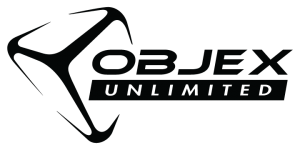BY: JEFF ROBBINS @3DSystems
I’m excited to bring you part 3 of our 3D printing materials series. For today’s entry, we are focusing on Figure 4 for production applications. Figure 4 is 3D Systems’ most recently launched additive manufacturing technology that takes a projector-based imaging approach with a non-contact membrane.
Despite being the newest technology in the company’s portfolio, Figure 4 has roots that date back to the company’s founding. In fact, this technology is named after its debut appearance in the original patent for Stereolithography (SLA), as imagined by the father of 3D printing, Chuck Hull. It was ahead of its time for the 1980s, since the auxiliary technologies it required were not yet advanced enough to support it. Now that the assistive technologies have aligned, however, Figure 4 is here, and it is making waves with its ability to efficiently build complex, high-resolution parts at speeds of up to 100 millimeters per hour.
One thing I always explain about 3D printing technologies to people who are new to the industry is that the various methodologies available should be viewed and treated as similar — but different — tools. Despite the commonality of being an additive technology, there will be times when selective laser sintering (SLS) or SLA will be a better choice for a given application. As Scott emphasized in his post, the technology and material you choose is not so much a question of preference, as a question of suitability defined by your project requirements.
With that being said, I am a huge advocate of Figure 4 technology for both prototyping and production. It combines accuracy and amazing detail fidelity with incredibly fast speeds and quick post-processing, making it a workhorse solution for nearly any environment. I’m convinced it is transformational for those who adopt it, and hear as much from customers. Now that our range of production-grade materials has expanded to cover diverse material properties and application areas, it is a more valuable tool than ever before.
Figure 4 configurations
Figure 4 technology is currently available in three configurations that vary in footprint, capacity, and versatility. If you haven’t explored the Figure 4 platform yet, it’s worth a visit to the Figure 4 page to see the different options side by side and watch some explanatory videos to better understand the distinctions and what is possible.
Each Figure 4 solution fills a role and meets the needs of users at various stages of AM adoption. Figure 4 Standalone is a great and affordable option for prototyping and low volume production, and is counterbalanced by Figure 4 Production, which is a fully-integrated factory solution for direct production. In the middle of the two is Figure 4 Modular, which is designed to grow and scale as you do, thereby potentially offering the best of both worlds, depending on your goals.
One of my favorite things about Figure 4 Modular is the incredible flexibility it lends users. Just as it sounds, Figure 4 Modular is a system comprised of printing modules that allow you to add printing capacity when you need it by adding more printer modules. Up to 24 modules can be added and controlled by a single console. Figure 4 Modular also lets you print in different materials at the same time, which can lend additional flexibility to your operations. This means, for example, that modules one through five could be printing in a tough plastic, while module eight is printing an elastomeric, and modules nine and ten are churning out castable resins.
Figure 4 Modular is a revolutionary multi-tasker, and that value is underscored by the impressive and growing range of production-grade materials that are now available for Figure 4.
Material diversity with Figure 4
Figure 4 has always been a no-nonsense machine capable of rapidly printing high detail, durable prints. Now, the speed and detail of this technology are being extended to other mechanical properties to suit a wider range of applications across environments and industries.
Of the newly launched materials, I am extremely excited about Figure 4 PRO-BLK 10, a production-grade manufacturing material with thermoplastic-like mechanical properties to enable direct digital production. Direct production is a tool-less, digital manufacturing process made possible with Figure 4 that delivers parts rivaling injection-molded quality.
Figure 4 PRO-BLK 10 material has become a fast favorite among 3D Systems beta-test customers, who are particularly impressed with its versatility and the time and labor reduction they have experienced. Major benefits of working with this material include a single curing cycle and the assurance of industry-leading environmental stability for consistent quality parts over time.
For users that have high heat applications, new Figure 4 HI TEMP 300-AMB offers ultra-high heat resistance, with HDT of over 300˚C. This feature makes this material well suited for a wide range of components, from HVAC and consumer goods, to motor enclosures and stators. Additionally, this material requires a single UV light cure, helping users accelerate time-to-part.
We have also developed several application-specific materials to answer needs our customers have expressed in healthcare and molding. If you’re in the medical space, Figure 4 MED-AMB 10 and MED-WHT-10 may be of interest, as each is biocompatible and sterilizable. For those working with injected silicones, Figure 4 EGGSHELL-AMB 10 is a process-optimized material for sacrificial molds in silicone casting.



